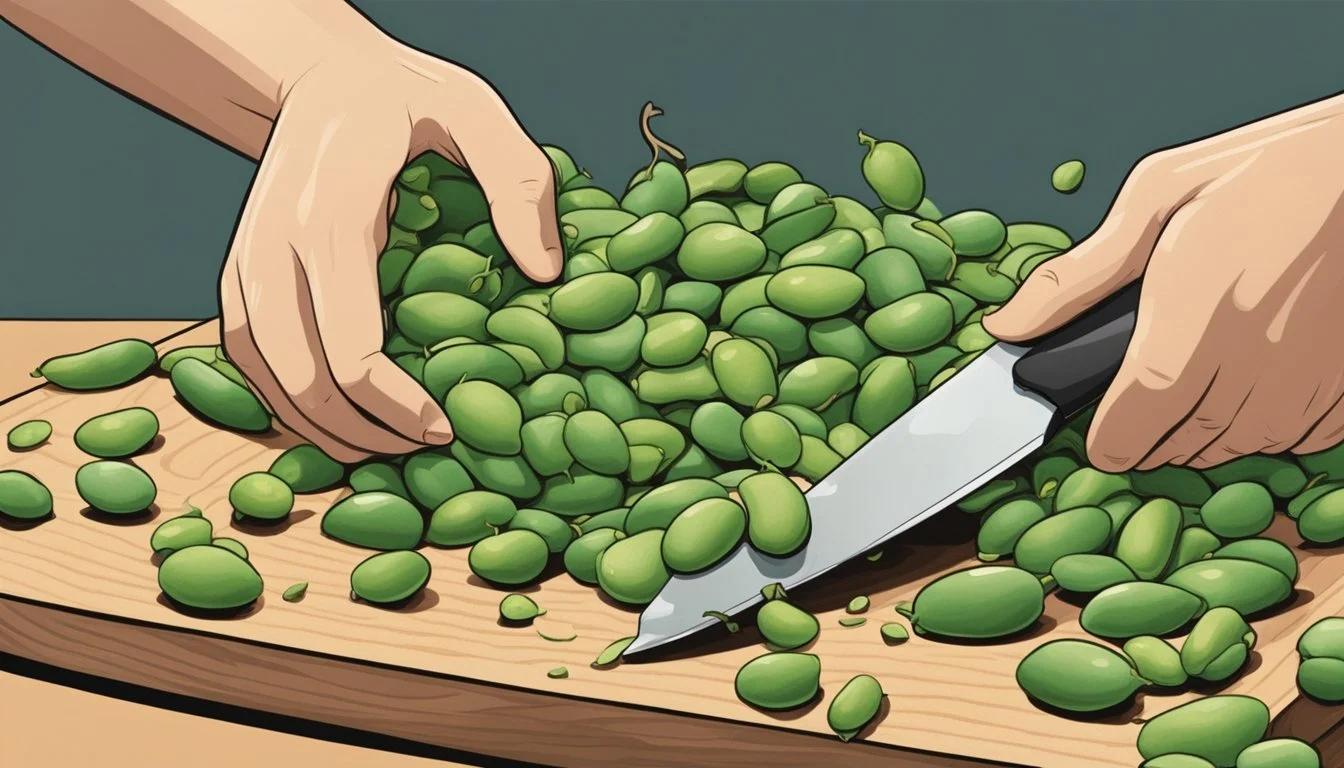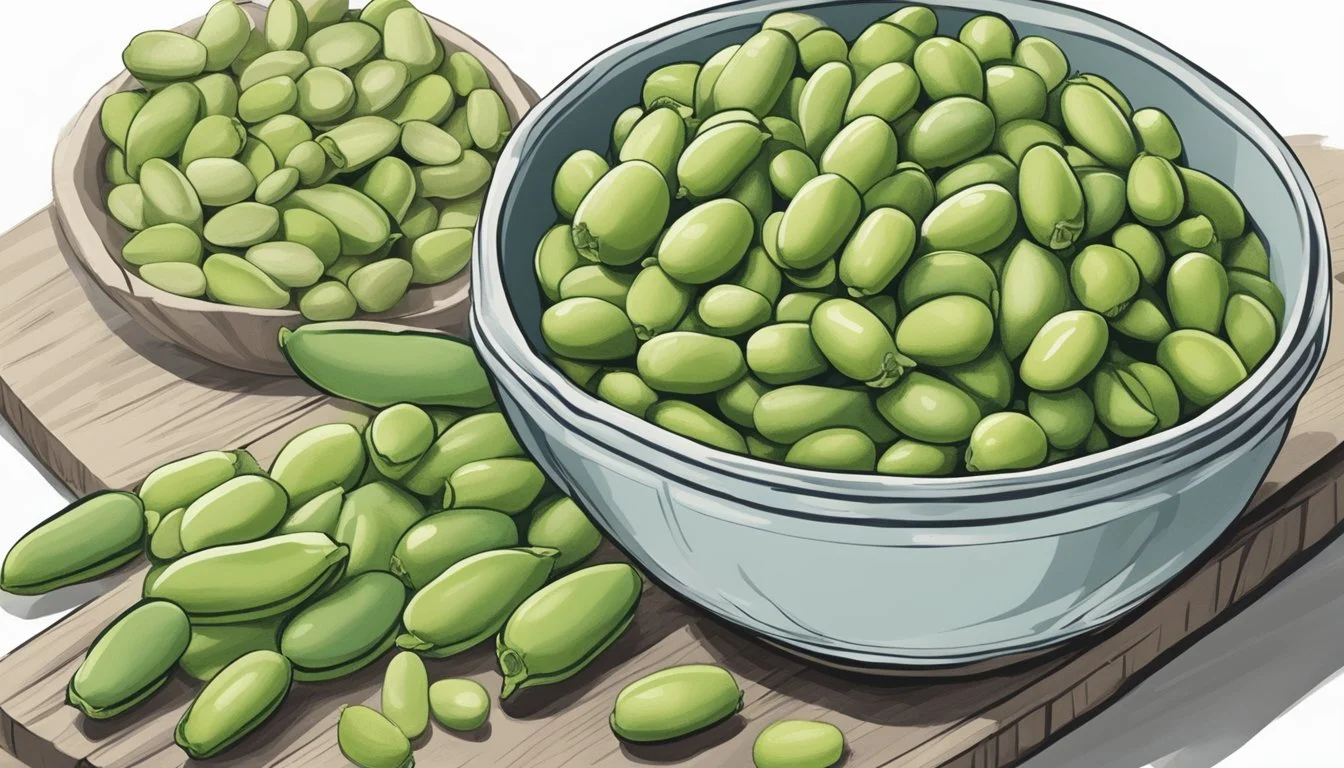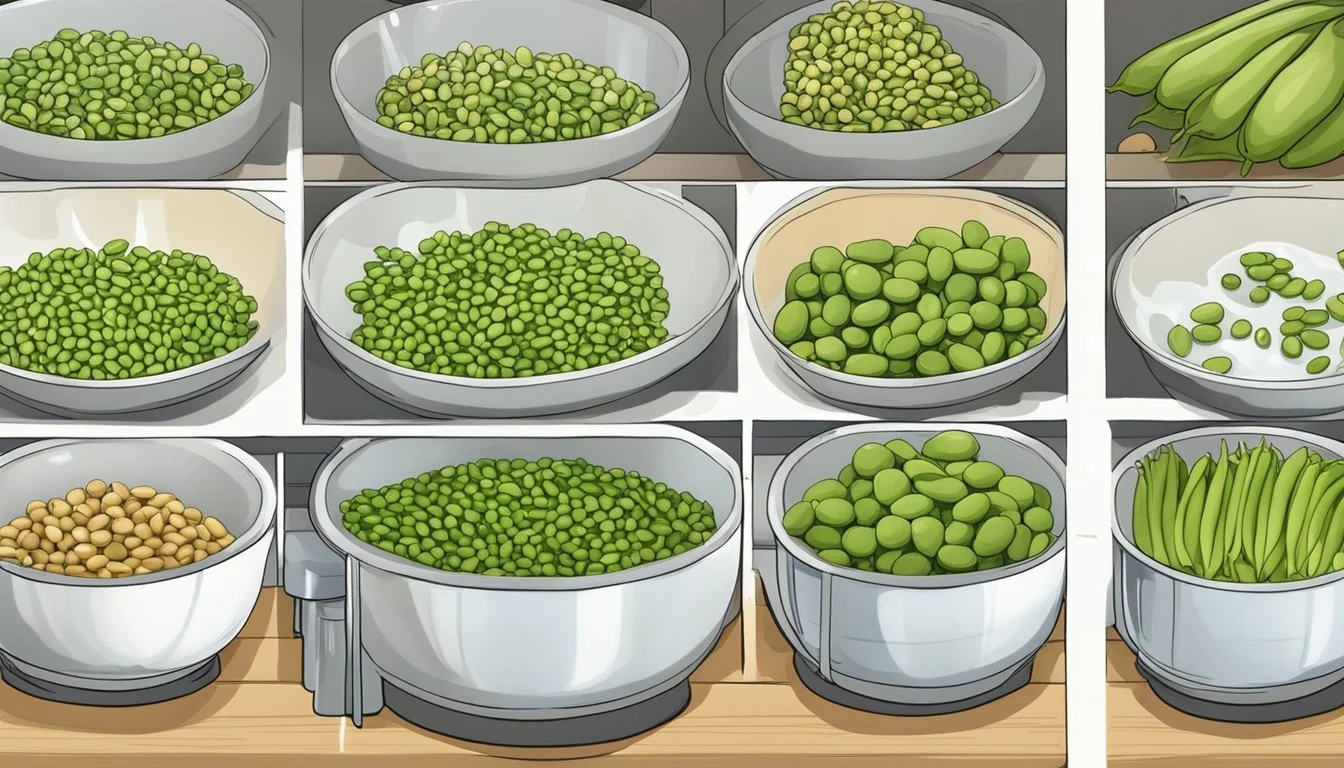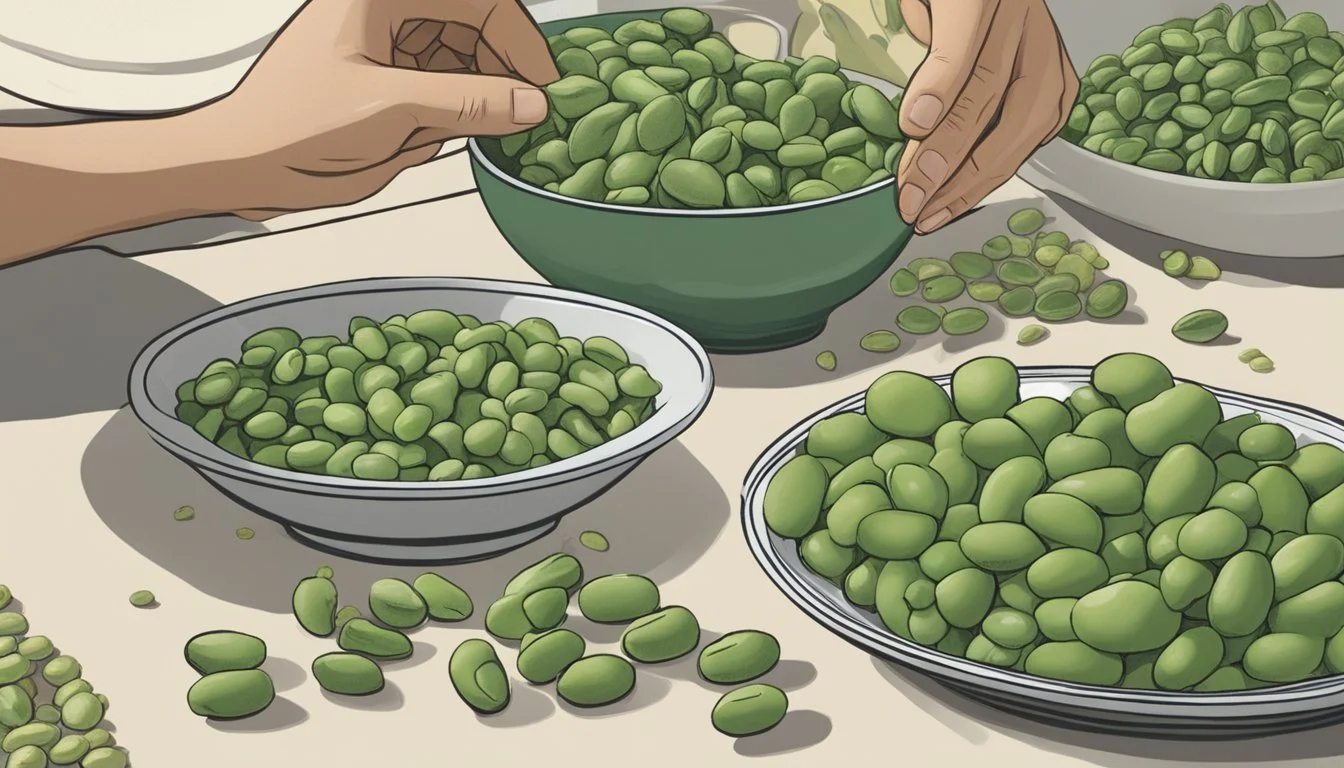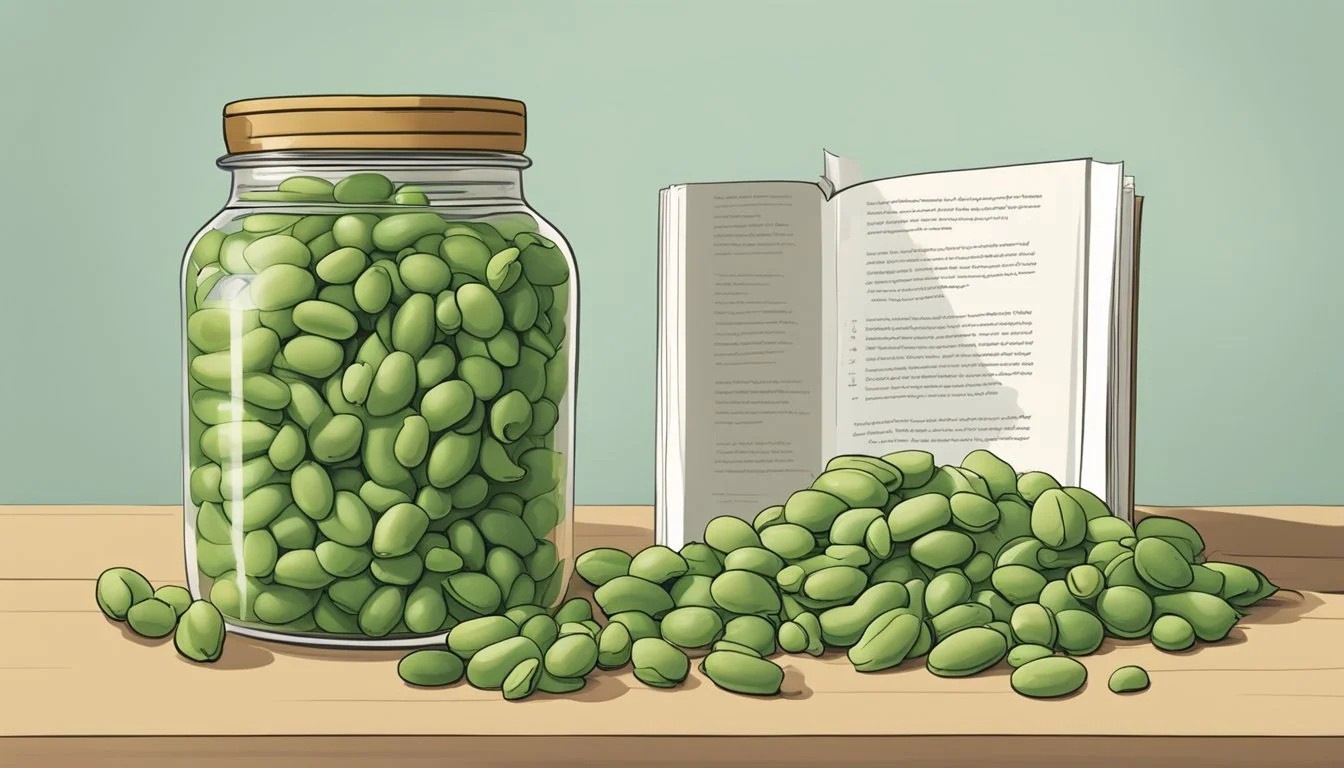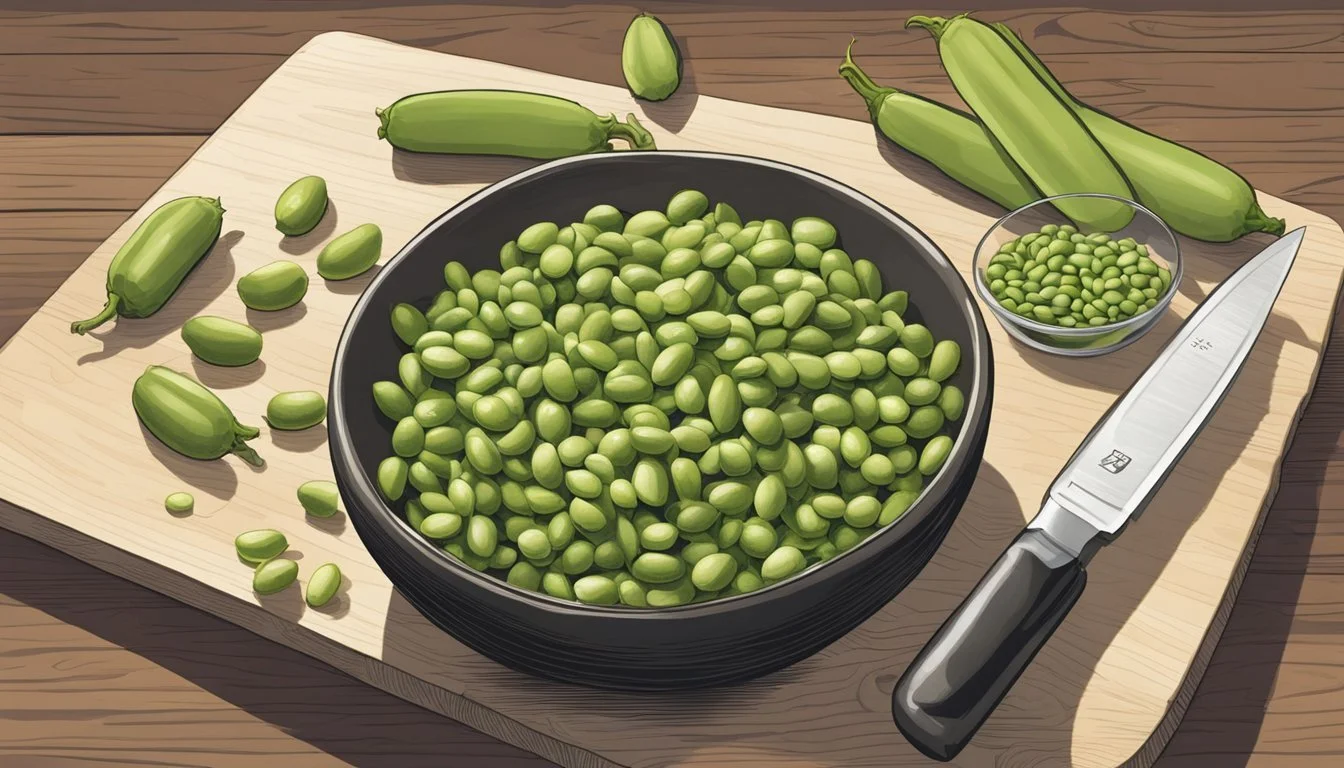How to Substitute Marrow Beans for Fava Beans
A Simple Guide
Marrow beans present an ideal alternative for fava beans in a variety of recipes, offering a similar texture and flavor profile. Fava beans are known for their creamy consistency and distinctive taste, which enriches dishes from Mediterranean stews (What wine goes well with stews?) to succulent salads. While they hold a cherished spot in many traditional and contemporary cuisines, their availability can sometimes be seasonal or restricted in certain regions. Hence, the culinary need arises to find an adequate substitute that can mimic the appealing qualities of fava beans without compromising the integrity of a dish.
With a robust structure and an appealingly creamy interior upon cooking, marrow beans make for a seamless substitute. They can be incorporated into recipes that typically call for fava beans, ensuring a similar mouthfeel and coherence in flavor. Marrow beans also share a comparable nutritional value, making them not only a convenient but a health-conscious replacement. Chefs and home cooks alike can rely on these beans to deliver a satisfying experience in dishes where fava beans are traditionally used.
Understanding Fava Beans
Fava beans, often incorporated into Mediterranean and Italian cuisines, are highly regarded for their protein-rich profile and distinctive flavor. Appreciating their nutritional benefits and culinary versatility is crucial when considering them as an ingredient or looking for substitutes.
Nutritional Profile of Fava Beans
Fava beans are a nourishing addition to diets, rich in protein, fiber, and vital minerals such as iron. Here is a brief overview of their nutritional content per 1 cup serving:
Calories: Approximately 187
Protein: About 13 grams
Fiber: Roughly 9 grams
Iron: About 14% of the Daily Value
Protein and fiber work in tandem to promote satiety and support digestive health, while the iron content helps in oxygen transport within the bloodstream – all contributing to a well-rounded diet.
Culinary Uses of Fava Beans
Renowned for their unique flavor, fava beans are a staple in numerous dishes. Their buttery texture and slightly nutty taste make them versatile in the culinary world. They are often found in:
Salads: For a fresh, earthy component
Stews and Soups: Where they provide heartiness
Pasta Dishes (What wine goes well with pasta dishes?): Common in Italian cuisine for a boost of protein
Dips and Spreads: As a base for a creamy and flavorful appetizer
These beans not only deliver an enriching taste and texture to meals but also offer considerable nutritional advantages, embodying a perfect intersection of health and taste in the kitchen.
Substitutes for Fava Beans
When fava beans are unavailable or unsuitable for dietary needs, several legumes can serve as substitutes, providing similar tastes and textures. These alternatives are categorized based on their form and usage in cooking, from fresh and frozen options to canned and dried varieties.
Legume Characteristics
Lima Beans: Often preferred for their similar size and creamy texture, lima beans, or butter beans, make for a seamless alternative in most recipes. They have a mild, somewhat buttery flavor which pairs well with various ingredients.
Edamame: These are young soybeans known for their sweet, nutty flavor and are nutritionally akin to fava beans. Edamame can add a distinctive taste to dishes where it’s used as a substitute.
Chickpeas: Also called garbanzo beans, chickpeas have a firm texture and nutty taste that can stand in for fava beans, adding a protein-rich component to any dish.
Canned and Dried Alternatives
Cannellini Beans: Available both canned and dry, these white beans offer a slightly nutty, earthy flavor and a fluffy texture, which can mimic the heartiness of fava beans in recipes.
Kidney Beans: With their robust flavor and substantial texture, kidney beans are an excellent substitute in dishes that require a more pronounced bean presence.
Black Beans: Smaller and darker, black beans are versatile legumes that provide a dense texture and a distinct but adaptable flavor profile suitable for replacing fava beans in various cuisines.
Fresh and Frozen Alternatives
Green Peas: Relatively easy to find year-round, green peas have a sweet flavor and can replicate the textural aspects of fava beans, excellent in fresh or lightly cooked applications.
Broad Beans: Technically, broad beans are a term synonymous with fava beans, but in some regions, it refers to different varieties which can be used interchangeably.
Sugar Snap Peas: While not beans, their crunchy texture and inherent sweetness offer a contrast to fava beans when used in salads or as a part of a vegetable medley.
Substituting fava beans may require adjusting cooking times and seasoning to account for flavor differences, but the listed alternatives ensure that dishes maintain their intended nutritional value and texture.
Preparing Bean Substitutes
When substituting marrow beans for fava beans, one must consider both preparation methods and seasoning to ensure the desired texture and flavor profile is achieved.
Soaking and Cooking Tips
For dried marrow beans, proper soaking before cooking is essential. They should be soaked in water for at least 4-8 hours or overnight, which helps to reduce cooking time and improve digestibility. After soaking, drain and rinse the beans.
The cooking process is straightforward:
Place the soaked beans into a large pot.
Cover with fresh water, typically twice the volume of the beans.
Bring the water to a boil, and then reduce to a simmer.
Cook for approximately 1 to 1.5 hours, or until tender.
For those using canned marrow beans as a substitute, it is much simpler. Canned beans are already cooked and only require heating. Drain and rinse the beans to remove excess sodium. Then, proceed to warm them on the stove over low to medium heat or add them directly to the dish being prepared.
Seasoning to Mimic Fava Beans
Marrow beans should be seasoned carefully to resemble the distinct taste of fava beans which is mildly nutty and slightly sweet with a rich, buttery texture. Below are some recommendations for seasoning marrow beans:
Start with a base of salt and black pepper, adjusting quantities to taste.
Add garlic (minced or powdered) for a depth of flavor commonly associated with fava beans.
Introduce olive oil to achieve the creamy texture characteristic of cooked fava beans.
Utilize fresh herbs like thyme or rosemary to complement and enhance the natural flavors of the beans.
For an added dimension of savoriness, consider a splash of lemon juice or balsamic vinegar.
By paying attention to these soaking, cooking, and seasoning steps, cooks can easily prepare marrow beans as a convincing and satisfying substitute for fava beans in a variety of dishes.
Bean Substitutes in Recipes
When cooking with beans, it's beneficial to know appropriate substitutes for fava beans, as their availability or dietary restrictions may necessitate alternatives. Marrow beans can be a fitting substitute for fava beans in various dishes, thanks to their comparable texture and ability to absorb flavors.
Salads and Side Dishes
Marrow beans can seamlessly replace fava beans in salads and side dishes where beans are a key component. Their creamy texture and mild flavor make for an excellent addition to side dishes such as marinated bean salads or roasted vegetable medleys. For example:
Marrow Bean Salad Replacement: Simply swap equal parts cooked marrow beans for fava beans.
Side Dishes: Use marrow beans in a risotto or lightly mash them for a hearty accompaniment to your meal.
Soups and Stews
In soups and stews, marrow beans are an ideal substitute, given their sturdiness and ability to maintain structure after prolonged cooking. They imbue the dish with a velvety texture and enhance the depth of flavor. Here’s how to utilize marrow beans:
Soups: Replace fava beans with marrow beans in a 1:1 ratio in recipes like minestrone.
Stews: Incorporate cooked marrow beans in the final stages to keep them from over-softening.
Dips and Spreads
Marrow beans can be used as a fava bean alternative in various dips and spreads where their comparable creaminess and flavor-absorbing qualities shine. They are particularly effective in recipes like hummus or blended bean dips. Incorporate marrow beans in the following ways:
Hummus: Puree cooked marrow beans in place of fava beans for a rich and smooth consistency.
Bean Spreads: Mashed marrow beans can form the base for flavorful spreads, perfect for sandwiches or appetizers.
Dietary Considerations
When substituting marrow beans for fava beans, individuals should consider the dietary implications, particularly for those with vegetarian and vegan preferences and the nutrient profile important for health and nutrition.
Vegetarian and Vegan Preferences
For vegetarians and vegans, marrow beans provide a suitable alternative to fava beans as they are entirely plant-based. Marrow beans are a good source of plant-based protein, which is crucial for these diets. The protein in marrow beans supports muscle repair and overall health, offering a comparable nutritional option for those avoiding animal products.
Nutrient Considerations
Marrow beans are nutritionally dense and offer various essential nutrients beneficial for heart health and the immune system. Here is a breakdown of the nutrients found in marrow beans:
Protein: Significant amount for maintaining and repairing tissues.
Dietary Fiber: Aids in digestive health and may support heart health.
Potassium: A mineral that is vital for maintaining normal blood pressure.
Folate (B9): Important for DNA synthesis and repair, and very important during pregnancy.
Magnesium: Involved in over 300 biochemical reactions in the body, supports muscle and nerve function.
Calcium: Essential for bone health and muscular function.
B Vitamins: Contribute to energy metabolism and brain function.
Vitamin C: An antioxidant that boosts the immune system.
Antioxidants: Protect against oxidative stress and may reduce the risk of chronic diseases.
Caloric Content: Marrow beans are relatively low in calories, making them a smart choice for calorie-conscious individuals.
Including marrow beans in one's diet provides access to these valuable nutrients and health benefits, generally without any significant differences in calories when compared to fava beans. They can support a well-rounded diet, rich in minerals and vitamins important for overall health.
Exploring Beyond Beans
When substituting marrow beans for fava beans, one may consider various plant-based alternatives that offer similar flavors and textures.
Other Plant-Based Alternatives
Green Peas: They are a viable alternative to fava beans, with a neutral taste and comparable nutritional value. They can be used in a 1:1 ratio.
Lentils: Their earthy flavor makes them a suitable substitute, especially in soups and stews.
Snow Peas: These are less sweet than sugar snap peas but can replicate the texture of fava beans in certain dishes.
Asparagus: Chopped asparagus can mimic the bite and fibrous texture of fava beans, especially when used in pasta dishes and risottos.
Edamame Beans: For a similar buttery texture to fava beans, edamame can be used in salads and Asian-inspired recipes.
One must consider the desired outcome of their dish when selecting an alternative, as these options can influence both flavor and texture.
Shopping for Substitutes
When searching for marrow bean substitutes, shoppers should focus on availability, ease of preparation, and culinary versatility. Substitutes should complement rice and pasta dishes seamlessly, regardless of the season.
Finding Substitutes in Stores
While marrow beans may not always be on hand, several legumes make suitable and affordable alternatives, and they are typically easy to prepare. Consumers will find a variety of substitutes in their local grocery stores or Asian markets. These alternatives can include:
Green Peas: Often available year-round, green peas offer a similar texture and taste, making them a great substitute for marrow beans in many dishes.
Lima Beans (Butter Beans): With a creamy texture and neutral taste, lima beans are versatile and can be used in place of marrow beans in various recipes.
Edamame: Found in Asian markets, edamame provides a slightly sweet and nutty flavor, as well as a creamy consistency.
Canned Legumes: For convenience, shoppers might opt for canned alternatives like lentils or chickpeas that are ready to use and can fit well into a dish traditionally calling for marrow beans.
By selecting any of these substitutes, cooks ensure their dishes maintain the desired flavor profiles and that their preparation remains straightforward, keeping their culinary creations both delicious and practical.
Conclusion
Substituting marrow beans for fava beans is a practical choice when seeking an alternative in recipes that traditionally call for fava beans. Marrow beans' robust flavor and meaty texture align closely with fava beans, making them an excellent stand-in for a variety of dishes, from salads and spreads to stews and pastas.
When cooking with marrow beans as a fava bean substitute, chefs should consider the following:
Cooking time: Marrow beans may require a longer cooking time to reach the desired tenderness.
Flavor profile: Marrow beans have a slightly stronger taste, which can enrich the dish's overall flavor palette.
Given the similarity in size and richness, marrow beans typically do not require complex adjustments for integration into recipes formulated for fava beans. The substitution should be done on a one-to-one basis, ensuring a seamless transition in recipes.
The choice of marrow beans not only introduces a hearty component to recipes but also leverages a comprehensive understanding of the role that legumes play in culinary arts. Utilizing marrow beans as a substitute demonstrates adaptability in cooking, while upholding the integrity of the dish. One is advised to embrace the change, seeing it as an opportunity to broaden a culinary repertoire, explore new tastes, and innovate in the kitchen.

